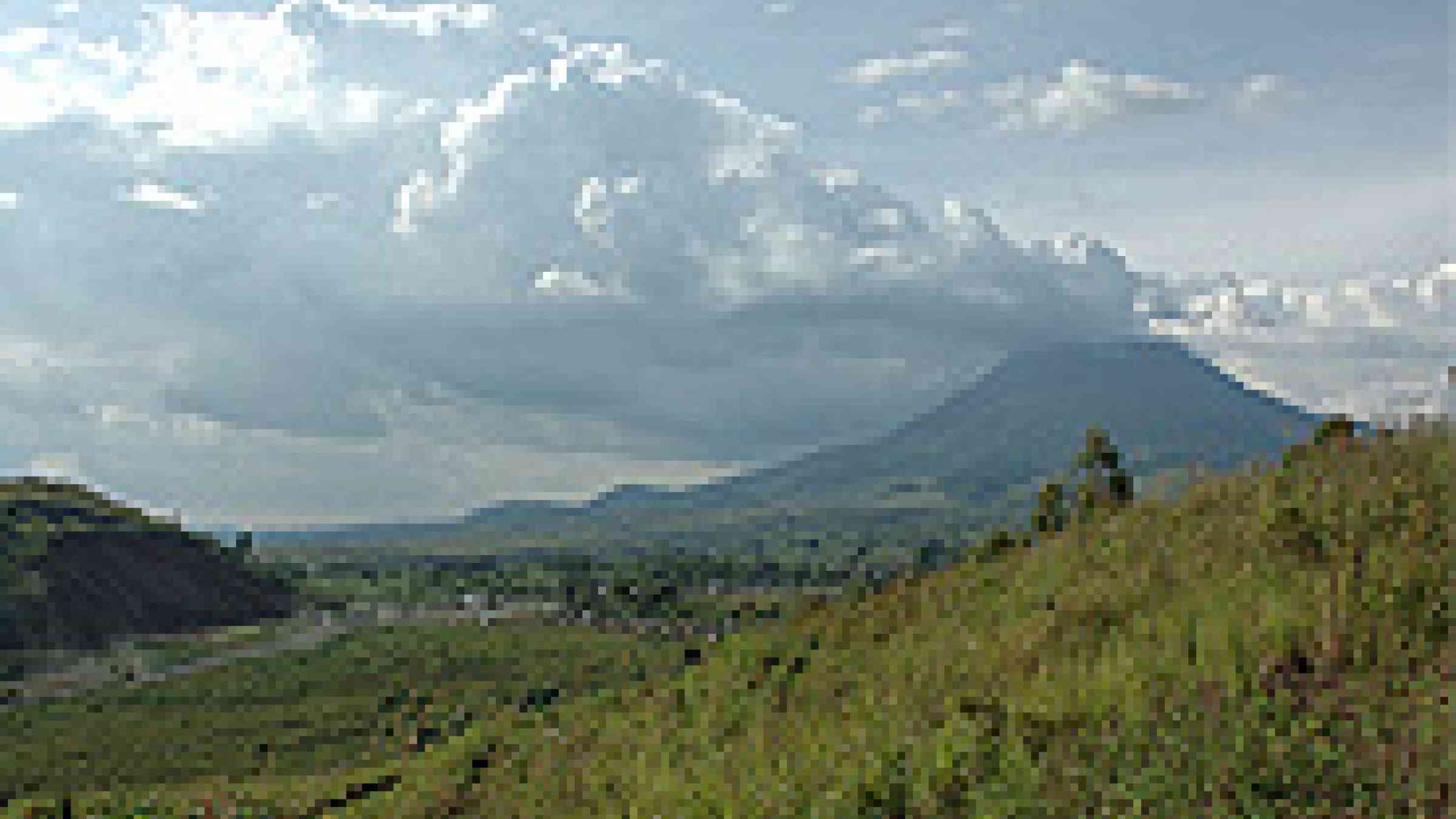
Goma - Perched on a hillside, the volcano observatory in Goma, capital of North Kivu province in eastern Democratic Republic of Congo (DRC), commands a great view of nearby Nyiragongo mountain.
"Goma faces the highest risk any city in the world could face," said Dario Tedesco, coordinator, project for the prevention and analysis of volcanic hazards in the DRC. The project is based at the Prevention and Analysis of Volcanic Hazard Unit of the UN Office for Project Services (UNOPS), near the observatory.
"We don't just have volcanoes; we have gas emissions, acid rain, polluted water and endemic fluorosis," he added. "People are asphyxiated in this region every year, because there are fractures emitting carbon dioxide all over the rift."
"It is difficult to estimate the number of people who are dying," Ciraba Mateso, scientific secretary in the department of geophysics at the observatory.
"People who live around here know where the gas is, so they avoid it," he added." But there were more deaths when IDPs (internally displaced people) came to this region because they did not know where the gas is."
Nyiragongo is one of the two active volcanoes in North Kivu. The other, Nyamulagira, erupted on 2 January, spewing lava 10km away and threatening the town of Sake and the Sake-Goma road. Sake is a major source of Goma's fresh food.
That eruption was Nyamulagira's 35th since 1882. Little damage occurred because the lava mainly flowed into Virunga National Park, according to North Kivu deputy governor Feller Lutaichirwa.
Two days later, the lava movement increased, flowing 500m within 24 hours. Then it slowed down. By the time it stopped, according to Action by Churches Together, rainwater collected for drinking in Sake, Kingi and Rusayo villages was polluted.
Local health centres also reported increased cases of diarrhoea and eye diseases while residents reported the deaths of livestock, the charity added.
UN agencies, international and local NGOs, such as the Congolese Red Cross, set up a contingency plan and a crisis management team. On 10 January, the agencies and government evaluated the situation in nearby villages and found the situation quiet.
"Nyamulagira is 32km west of Goma, but we were terrified when it happened," a local resident in Goma, Françoise Turange, told IRIN. "There was a lot of panic. We thought it would be like 2002 when Nyiragongo erupted."
That eruption lasted 24 hours. The volcano is 17km from Goma town, but it left scores of people dead, 120,000 homeless and 18 percent of the town's surface covered in lava, according to the observatory.
About 300,000 people had to be evacuated. Others fled across the Rwandan border to Gisenyi town, according to aid workers. At Goma airport, half the runway was covered in lava, further complicating relief efforts.
"The eruption of Nyamulagira in January was a wake-up call, a reminder that Goma faces a grave risk," one aid worker told IRIN on 13 February. "After Haiti, we need to be prepared for eventualities."
Exposed
Located in the East African Rift Valley, Goma lies in a region that has been wrecked by years of fighting between DRC government forces and various armed groups, including Rwandan Hutu militants.
The insecurity has affected the work of the observatory, forcing experts to monitor the volcanoes mainly using helicopters from the UN Mission in Congo, MONUC. For example, after Nyamulagira erupted, MONUC arranged daily flights to assess the intensity of the volcano. That has now been reduced to two weekly flights.
Against these odds, the population of Goma has grown to about one million from 400,000 in 2004 and 250,000 in 2002, making it difficult to evacuate in the event of a volcanic eruption, a military observer in Goma said.
Preparedness
The 2009 contingency plan that was used by the government, UN agencies and NGOs to respond to the Nyamulagira eruption was developed on past scenarios.
The DRC government has endorsed it, and this now forms the basis for response in the event of an eruption that will require the evacuation of the population. But, say aid workers in Goma, the plan is largely under-resourced.
"Everybody living here is scared," one NGO worker said. "The trouble is, aid agencies will fly out their staff. What about the locals? Can anybody really move a million people out of this town quickly enough?"
Residents worry too. "It is one thing to hear on the radio that we should run towards Gisenyi, but I have 11 children and moving them on foot would be hard," said Turange, who is in his early 50s.
"The idea is to have an early warning alert," Dario told IRIN. "But this needs specific work - we call it science for end-users. The problem is that we are not getting enough support and funding."
The observatory has some equipment, but it needs to conduct a tomography (a sort of radiography beneath the volcano) to understand where the magmatic reservoirs are, but has so far failed to find the required US$500,000-$1 million, partly to fly in scientists.
"In January, all activity started without any specific warning, without any detectable precursor," Dario said. "This tells us the magma was already there, waiting to get out. It could happen again.
"We fear that the fracture reached the city during the 2002 Nyiragongo eruptive event, meaning the next eruption could start from the city itself. We need to know how it is working and where the magmatic reservoir is."
The volcanoes are also being watched by experts in Luxembourg, Italy, Belgium, NASA, and Michigan in the USA, who collect satellite information. Some of them also watch Lake Kivu, which is rich in methane and carbon dioxide.